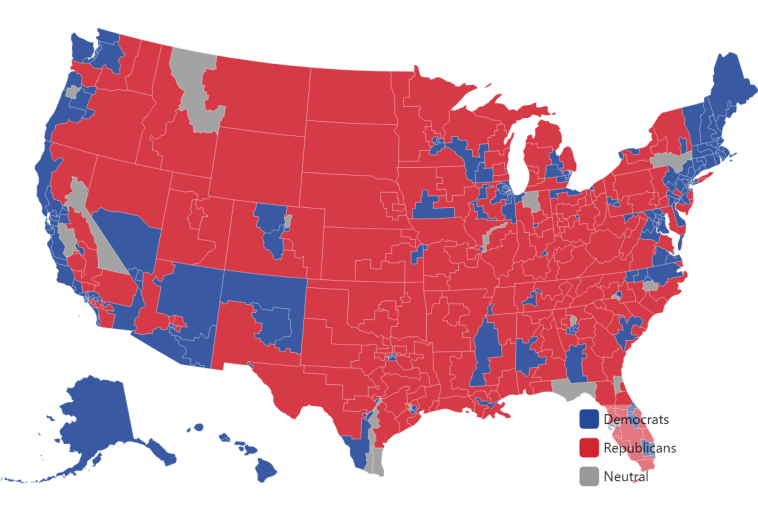The forthcoming U.S. election positions itself to compete with the 66% turnout from the previous election, outpacing the typically reduced interest during the midterm election, which saw a climax of 49% participation rate in 2018. It may seem commendable until you juxtapose it with the higher voter turnout rates, close to 80%, observed in other democratic countries. A shrinking faith in the political architecture, epitomized by a third to half of potential voters abstaining from voting, is a concerning trend denoting disenchantment with the system.
The root of the issue lies in the very fabric of the American electoral system, which, in its unique setup, seems to diverge from the norms adopted by most democratic nations. While a conventional democracy elects more than one representative from each constituency proportional to the votes secured by each party, America clings to electing a single representative. To illustrate, if a region with five representatives sees a party capture 40% of the votes, the party is entitled to two of the five seats, a system called proportional representation.
Proportional representation is not new; it’s been around for decades, embraced by democracies worldwide for a compelling reason. The core idea encourages competition in elections, thus prompting an increased voter participation — exemplifying the underpinnings of a healthy democratic process. The current low participation rates witnessed in the U.S. elections can be largely attributed to the fact that most congressional districts stay safe for their encumbent politicans.
The unchallenged dominance of incumbents in at least 80% of congressional districts every cycle and the lack of contest in seven out of every 10 general election races, including almost half the state legislative races, underscores the need for an electoral system overhaul. In contrast, the Democrats’ argument of gerrymandering does not hold up, as even the states with independent redistricting commissions remain largely uncompetitive.
The segregation of the population into Republican-leaning or Democrat-leaning geographical regions makes fair representation a challenge. This often leads to one-party dominance in certain areas, such as the all-Republican representation in Oklahoma despite one-third of the constituents identifying as Democrats, and the all-Democrat representation in Massachusetts despite a third of the population leaning Republican.
Democrats often attribute these disparities to gerrymandering, but the truth is more complicated than that. Even a perfect redrawing of the districts will not guarantee that a Republican could get elected in Massachusetts. Researchers have highlighted that ‘although there are more ways of building a valid districting plan than there are particles in the galaxy, every single one of them would produce a 9–0 Democratic delegation.’ To put it another way, merely redefining boundaries will not resolve the issue. We need to reevaluate the entire system.
Shifts away from single-member constituencies towards proportional representation could provide a vital remedy. This would enhance competition in more districts, inspire more candidates to run for office, and expand the set of choices presented to the voters. Furthermore, gerrymandering would effectively become a non-issue under proportional representation.
Implementing these changes is not an unrealistic goal — it simply requires legislative amendments at both the federal and state levels. Proportional representation has historical roots in American politics: post the Civil War, Illinois adopted a partially proportional system for over a century, where seats were allocated based on the number of votes cast.
Under Illinois’ proportional representation system, a candidate could secure a seat with a vote share above 25%. By alluding to the widespread adoption of proportional representation in democracies around the world, Illinois demonstrated that elections become more competitive under such a system, and minority constituents also can gain representation.
However, Illinois abandoned its proportional voting system in 1980, leading to an increase in uncontested state House races from 4% to 44% presently. Clearly, the proportional representational model could serve as a blueprint for honing the current system.
Americans expressing frustration with the existing electoral architecture is perfectly justified. They have grown weary of the lack of choice and have lost faith in democratic institutions. The scenario need not be grim, provided people are open to reforms like proportional representation, which could significantly reconfigure the system and possibly restore faith in the democratic process.
The inquiry now is whether Americans are frustrated enough to champion these reforms. If people are ready to support changes that can lead to a diverse representation, including a stronger voice for Republicans in traditionally Democratic strongholds, we could see a new chapter in American politics.
The litmus test for our democracy may come down to just this: are the citizens willing to rally for reforms such as proportional representation, which could revitalize our political discourse and ensure a level playing field for all candidates across the nation, irrespective of their party affiliation?
While Democrats endlessly point fingers at systems or mechanisms such as gerrymandering, it’s clear that a more comprehensive overhaul of the system, such as proportional representation, could truly stir the political landscape. In order for this to happen, it must come from the people, informed and aggrieved enough to demand and push for the change.
As such, it’s necessary to promote the understanding of proportional representation and its potential impact amongst our citizens. It’s time we looked beyond the conventional narrative of blame games fed to us by Democrats, took cognizance of the larger issue at hand, and considered intelligent solutions such as proportional representation. In so doing, we might just build a stronger, truly representative democracy for our nation.


